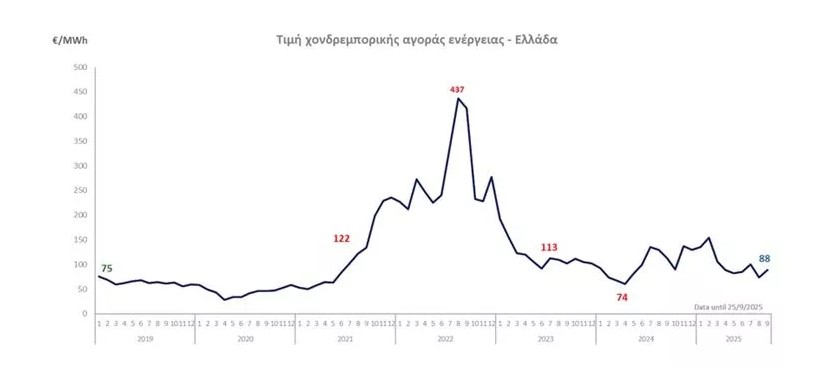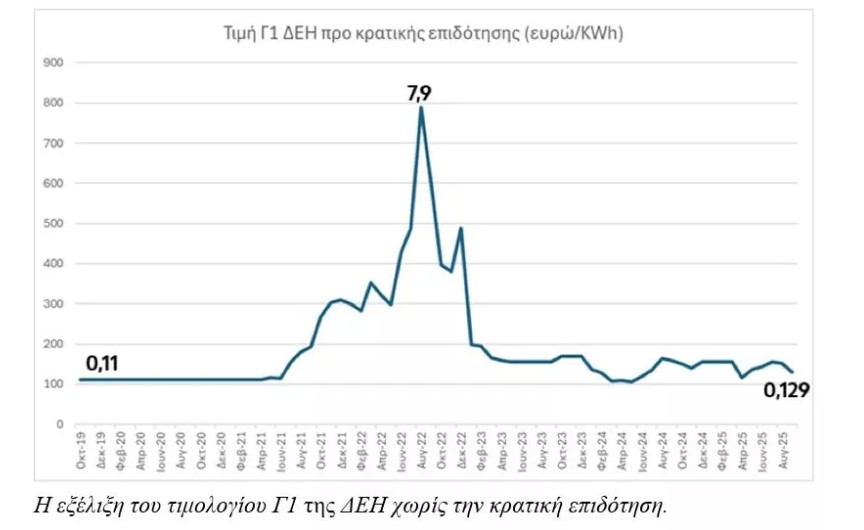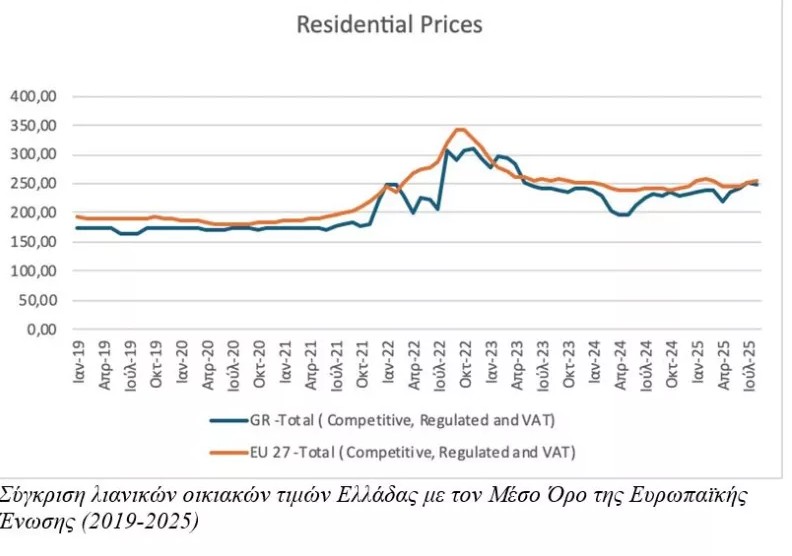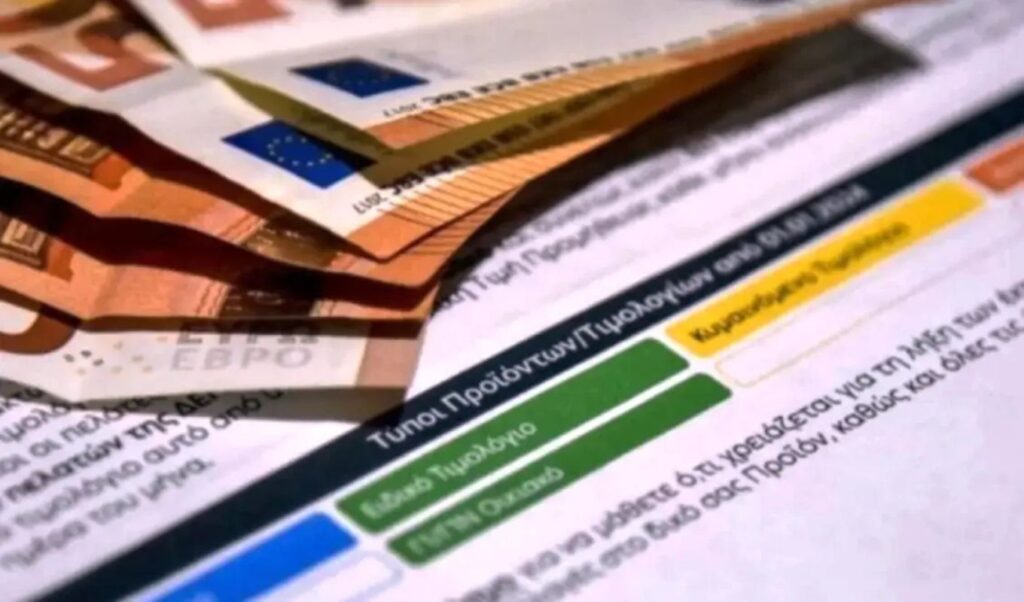Electricity prices at both retail and wholesale levels have returned to the levels they were at before the international energy crisis, following the massive increases of previous years. This development occurred despite the fact that the price of natural gas and carbon dioxide (CO2) emission allowances today are significantly higher compared to the first half of 2021. Also interesting is the comparison with other EU countries, which shows that Greece has consistently remained below the European average for retail prices in recent years. On average, Greece ranks 16th among the 27 EU countries, while from January 2024 onwards it often holds an even lower position.
As energy market sources emphasize and according to the ANA-MPA report, prices will continue to show fluctuations depending on the time of day and season, which directly affect supply and demand as well as the situation prevailing in neighboring markets connected to the Greek one. However, the general picture is that prices have decreased significantly compared to the highs of the energy crisis and – provided that further penetration of renewables continues, along with strengthening energy storage infrastructure and networks, and no international disruptions occur – there are conditions for maintaining the same general trend in the coming years.
How wholesale and retail prices are formed in electricity
Specifically:
-Retail prices are also gradually returning to pre-crisis levels, following the fluctuations and seasonality of wholesale prices. For example, the tariff with the most customers in the country today, DEI’s green G1, currently stands at €0.129/KWh, while the pre-crisis price was €0.11/KWh. At the highest point of the crisis it had reached up to €7.9/KWh, a price that did not reach final consumers due to support measures implemented by the government and supplier self-restraint. DEI in particular absorbed a large part of the increases through discounts, with a total expenditure of €2.4 billion. Thus consumers did not experience the full impact of the extremely high wholesale prices during the crisis.
-Wholesale prices formed at the Energy Exchange also fluctuate at levels corresponding to the first half of 2021 (between €70-100/MWh) despite the fact that the price of natural gas and carbon dioxide is higher compared to the first half of 2021. The development of renewable energy sources over the last five years played a significant role in this, as did the country’s independence from expensive lignite production burdened with CO2 emission rights. It is estimated that every 1TWh of renewables added to the system so far has led to a reduction in wholesale price by approximately €2.2/MWh (under normal natural gas price conditions). From 2019 to today, renewable energy production has increased by approximately 14 TWh, which has led to a reduction in the Target Price by approximately €31/MWh for 2025.
It should be noted that during the energy crisis, prices skyrocketed to historic highs, with wholesale exceeding €400/MWh in summer 2022.







